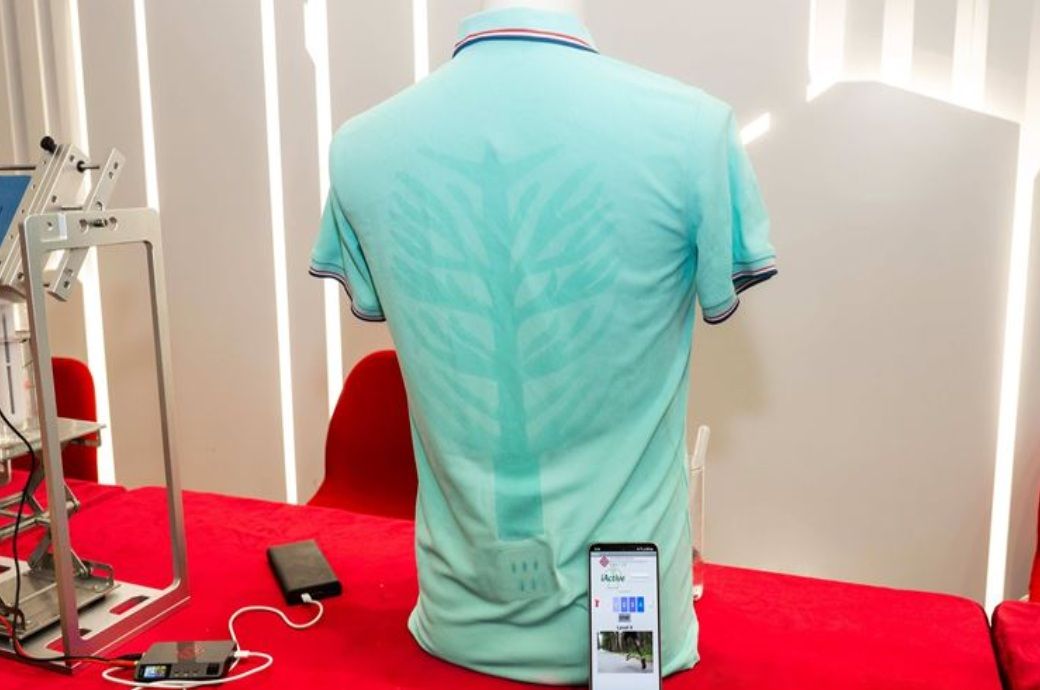
Smart technologies, especially intelligent wearables and AI, can be key to sustainable personal cooling. “According to the World Meteorological Organisation, there is an 80 per cent chance that at least one year between 2025 and 2029 will be the hottest on record, making personal cooling increasingly vital for well-being, health and productivity. We have been creating intelligent, superhero-like garments that provide on-demand adaptive cooling and clinician-like health monitoring to help address the challenge of extreme heat,” professor Dahua Shou, Limin Endowed Young Scholar in Advanced Textiles Technologies, associate professor of the PolyU School of Fashion and Textiles, said.
By integrating the four cooling mechanisms of radiation, conduction, convection and evaporation, this stand-alone perspective outlines strategies to adaptively regulate body heat and moisture in dynamically changing real-world settings. The paper also presents an AI-driven, closed-loop framework that connects sensing, prediction, and actuation to deliver personalised, energy-efficient cooling, with a scalable and recyclable design that supports public health, workplace safety, and performance.
Sustainable personal cooling is evolving from the use of passive fabrics to the integration of smart systems. Notably, spectrum-selective textiles effectively release mid-infrared body heat while blocking external solar and urban heat gain. Thermal insulation is being engineered with conduction-tunable fillers, while ventilative and evaporative cooling is boosted by moisture-responsive fibres. Lightweight wearables, such as variable emittance devices, and electrocaloric and thermoelectric modules paired with flexible solar and on-body energy storage, enable active and controllable cooling. These emerging technologies strategically employ model-selective cooling and incorporate human-centered design for comfort, durability, washability, and low weight, expanding comfort zones and reducing dependence on air conditioning, PolyU said on its website.
Despite promising progress, key challenges in personal cooling remain. Sweating helps cool the body, but limited sweat management increases fabric weight and cling, while reducing permeability and radiative cooling efficiency, especially during heavy perspiration. Real-time adaptive thermoregulation, which responds to changing environments and individual physiology while ensuring comfort and safety, is ideal but difficult to achieve.
“We also need interdisciplinary integration across textiles, thermodynamics, flexible electronics, and AI, along with scalable, recyclable manufacturing that balances sustainability, wearability, fashion, and performance. Standardised, user-centric metrics, such as cooling power per watt, thermal sensation, and user acceptance, are essential for fair comparison and adoption,” Shou said.
Shou and his research team are tackling extreme heat with various innovative technologies. iActive intelligent sportswear uses low-voltage-driven artificial ‘sweat glands’ and a root-like liquid network mapped to sweat zones to quickly eject perspiration as droplets, reducing weight and cling, keeping the skin dry, and removing sweat up to three times faster than peak human sweating.
Omni-Cool-Dry is a breathable skin-like fabric that routes sweat directionally while providing spectrum-selective cooling. By reflecting solar and ground radiation and emitting mid-infrared body heat, it helps keep wearers cool and dry even under the sun, lowering skin temperature by about 5°C compared to conventional fabrics.
For hot workplaces, thermo-adaptive Soft Robotic Clothing embeds temperature-responsive soft actuators that expand to thicken fabric and trap still air, solving the problem of ‘one-level’ thermal insulation. Thermal resistance varies from 0.23 to 0.48 K·m²/W, keeping the inner surface 10°C cooler than conventional insulating garments even when the exterior temperature reaches 120°C, the website added.
SweatMD is an all-textile, non-invasive wearable that channels fresh sweat through a nature-inspired microfluidic network and uses skin-friendly sensing yarns to track biomarkers like glucose and potassium. It delivers real-time, molecular-level health insights such as indicators of fatigue and dehydration to a smartphone.
Collectively, these innovations form an AI-ready ecosystem: sensors quantify physiology, models predict cooling demand, and intelligent clothing actuates targeted responses. Integrating textile sensors, fibre-based coolers, and on-body energy harvesters has the potential to enable self-sustained cooling.
Spanning everyday wear, as well as sports, and protective gear, these innovations bridge the gap between fundamental research and real-world applications to address global challenges. PolyU translational research institutes across Mainland cities and interdisciplinary research centres, such as the PolyU-Xingguo Technology and Innovation Research Institute and the Research Centre of Textiles for Future Fashion, allows the University’s scholars to tap into these cities’ diverse application scenarios and collaborate with leading enterprises to accelerate the transformation and scalable deployment of scientific research achievements.
ALCHEMPro News Desk (RR)
Receive daily prices and market insights straight to your inbox. Subscribe to AlchemPro Weekly!